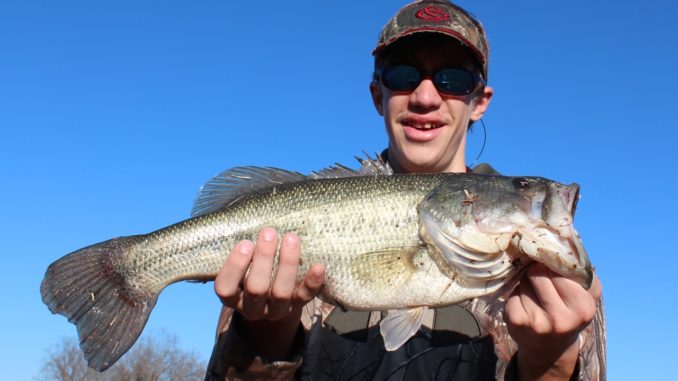
“Lost art” is great technique for January river action
Jigger-poling seems to be a lost art among bass anglers, but it was once a fairly popular way of catching a limit of bucketmouths on South Carolina’s Edisto River. It’s a technique that Billy Garner of Ridgeville, S.C., still uses, and January is a great time for it.
“It’s very effective on really cold, even miserable days,” Garner said. “Those are the days that I have the most luck jigger-poling. It’s not something you’ll see many people do. Any time I do it, if I run across anyone else on the water, they’re always curious enough to ask me what I’m doing.”
With a collapsible, 16-foot fiberglass bream pole, Garner cuts enough of the tip off that a tip guide from a standard bass casting rod will fit snugly on the end. He glues the rod tip on and runs 60-pound braided line through the eye, tying it onto the pole using a bowhunter’s knot. With a section of 24 to 36 inches of line coming off the rod, he finishes things off with a topwater plug.
“It works best if you have a partner paddling the boat, or in my case, I use a small sneak boat with foot pedals to steer my trolling motor,” he said. “Then you just ease down the bank, especially where a lot of overhanging tree limbs are, and you point your rod at the bank, pulling the plug along. You want to hit the rod tip in the water two or three times, then pause, then hit it again,” he said.
“It’s the most exciting bite you’ll ever get. It’s a huge explosion, very close to you, and getting the fish in the boat is just as exciting.”
And just as unconventional.
With no reel and a very limber rod, Garner said the only way to get the fish in is to pull the rod straight in, hand over hand until you’ve got the whole rod in the boat, then grab the line if you need to or lip the bass if he’s close enough.
“Sometimes you’ll toss the rod out the other side of the boat by the time you get the fish in. It really goes against everything you learn as a bass angler, which is to allow the equipment to do the work. In this case, once you hook the bass, you’re using your own hands to bring the bass to you, and that’s why you have to use 60-pound braided line,” he said.
The trick, Garner said, is to keep the lure as close to the bank as possible.
“It’s deep enough along the banks — especially where you have lots of trees and debris — and bass love to hang out there,” he said. “Some days you’ve really got to be persistent, and you can’t be shy about smacking the water with the rod tip. Other days, it’s on like gang busters. Cold, bitter, even rainy days is when they just seem to hit it the best.”





Be the first to comment